This is fine: how to balance vision & management. – Ellen’s Blog
This post originally given as a talk at the Product Leader Summit.
Before I was trying to make it 100x easier to write software, I was the first employee (and VP of product) at a travel startup named Lola. While I was there, we went from a project in an incubator to a Series B company with 50 people. The first six months were actually fine, and the next eighteen months it felt like I lived in this meme:

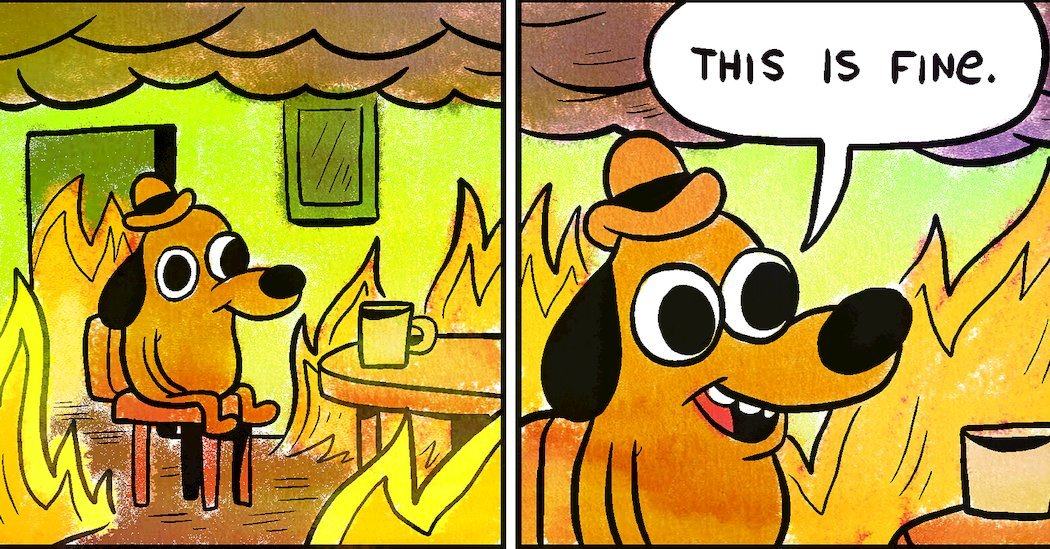
It felt like every moment I had to be at peak performance to help the 50 people around me. I even put a “this is fine” dog plushy on my desk to remind myself to have a sense of humor.

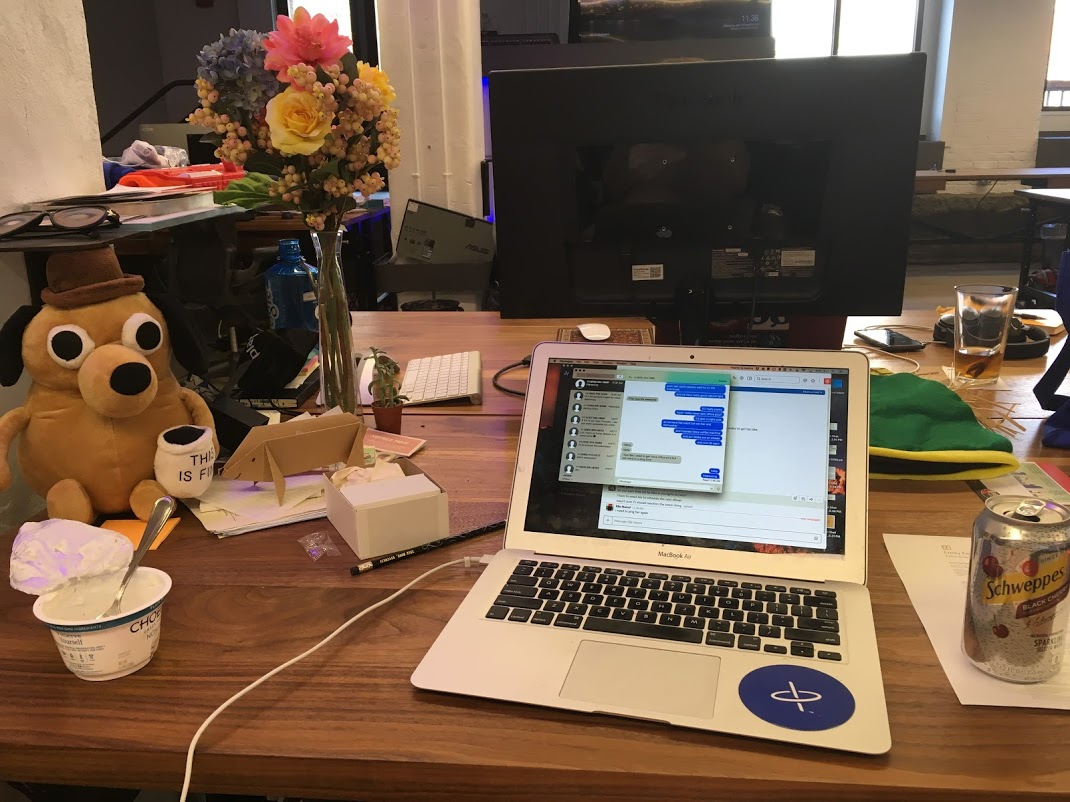
I did everything one day at a time. During the week I managed and did urgent tasks. It was impossible to say “I’m going to sit in a conference room and think” because I’d be blocking someone else.
All of my long term work happened on Sunday morning.
This was particularly painful because as an early career Product Manager, I had always had ample time. After leaving Lola, I went through my calendar. I was convinced that there was a productivity hack I was missing, or a giant waste of time.
I knew I had to get better before starting something because a founder has even more jobs than product .
There had to be something better than the Sunday morning, and I wanted to make sure I found it. I revisited Josh Elman’s classic definition of product: Help your company ship the right product to your users.¹
I went through my calendar and journals to look at everything I did. This is what I learned.
Product leadership is about answering five fundamental questions:
- Who sets our vision?
- Is our vision right?
- Does everyone understand our vision?
- Are we building and retaining a great team through career growth?
- Do we have peak performance? Are executing as quickly as we can?
Product leadership feels stressful when you try to answer all five questions, 100%, every day.


For it to feel good, it is important to answer these fundamental product questions at the right time, in the right order.
I think of them in four company stages:
- Starting
- Finding Product-Market Fit
- Scaling
- Continued Excellence
Starting Up
When you start a company, the first question you need to answer is “who sets the vision?
There can be no ambiguity. At the early stage, any ambiguity wastes time. Later, if there’s ambiguity between who sets the vision, the team will operate at cross-purposes. In a larger organization the differences will get amplified down the hierarchy. This is so important to success that until it’s answered you don’t need to focus on anything else:

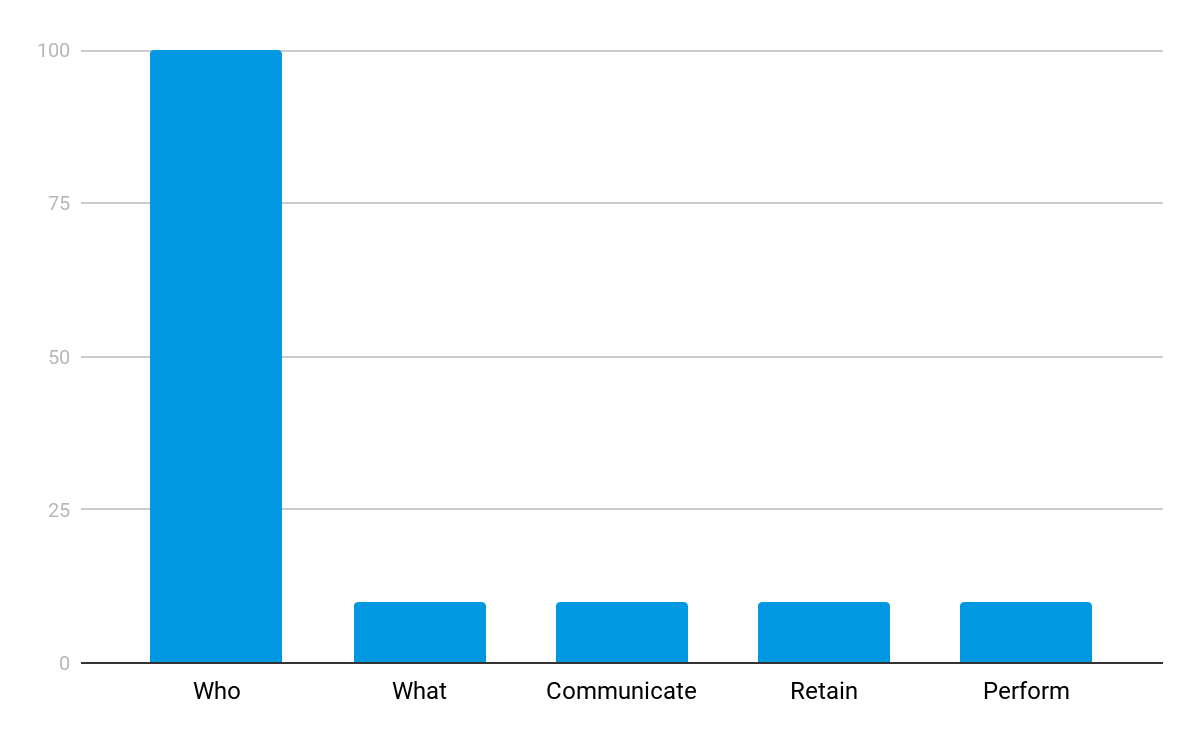
Once you know who sets the vision it will be easy to resolve disagreements. You can go back to the core vision for each detail level decision (and in worst case, ask that person explicitly).
I learned this the hard way. I had the chance to work with two CEOs with strong product direction (Perry Chen, Paul English). In both cases I had joined because of their vision, and yet still wanted to have a say in the direction. This burns emotional energy for everyone.
If you’re still struggling with this, ask yourself “am I truly willing to give up setting the vision?”
As an early stage founder, this is a question you are likely having with your cofounder. Later, this may get figured out again when you hire a product person. As Marty Cagan wrote, “ If you have a strong visionary CEO, there may be some very strong VP Product candidates that won’t want the position because they know that in this company, their job is primarily to execute the vision of the CEO.”
I have found more often that product leaders are not this mature. Often I see product leaders say they “want more time for vision,” when the company does not actually need another person setting vision.
You should only revisit the “who” when something big changes:
- New product leader joins
- CEO or Founder leaves/changes roles
- Company product strategy changes
- Company trajectory changes (usually happens with 2/3).
Finding Product-Market Fit
Once you know who sets the vision, you have something to start from.
You must make sure that vision is correct (or modify it accordingly).
At this stage, most of the energy and effort needs to go into validating the vision:

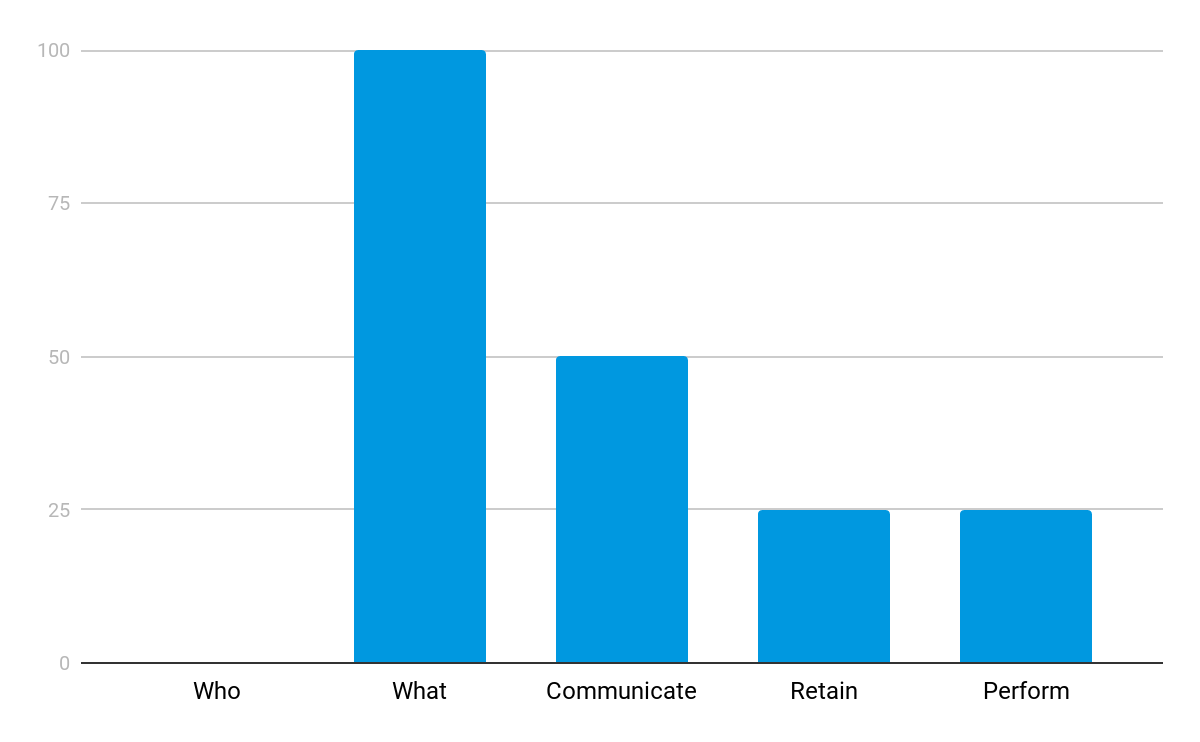
You can’t just wake up one day and know if it is/isn’t right. This means you’ll also be working to have the team internalize it and work on it. That said, no one talented wants to work at a company that isn’t going to win (even for a lovely manager). No one cares if your bug triage process is perfect if you aren’t sure you’re building the right thing.
While you can allocate some time to helping build the team and process, the focus must be on building the right thing.
There are many ways to validate vision.
There are lots of appropriate techniques to help validate you’re building the right thing.
- User Research. Are you building a thing people want/will use/fits with their workflow/meets an unserved need?
- Customer Development. Will people pay for what you’re building? How do you think about pricing?
- Hypothesis Testing. Can you build something to quickly test a hypothesis?
- Competitive Landscape. How does your vision/solution compare to others?
- Market Research. Are you building a venture-scale business?
One flaw I’ve seen from founders and product leaders is only using the technique that they’re most comfortable with. Especially before business school, I always tended to go back to Ethnography to validate things. A good product leader should use multiple techniques (and a set of techniques that will convince all stakeholders within their organizations).
The vision should not change every day.
While it’s good to keep validating the vision, it shouldn’t be changing every day. It’s fun to work on the vision, but the team should not feel whiplash.
The vision should only change when something material happens, not the whim of the “smart person you met with recently.”
This means vision only changes when:
- You learn something from your validation work.
- Something changes in the market.
- Something changes in your technical assumptions.
Scaling
Once you know that you’re going in the right direction, it’s likely that your company will grow very quickly. As you hire and the team grows, things that were taken for granted early on will disappear. The way employee #50 views the company is completely different than employee #2.

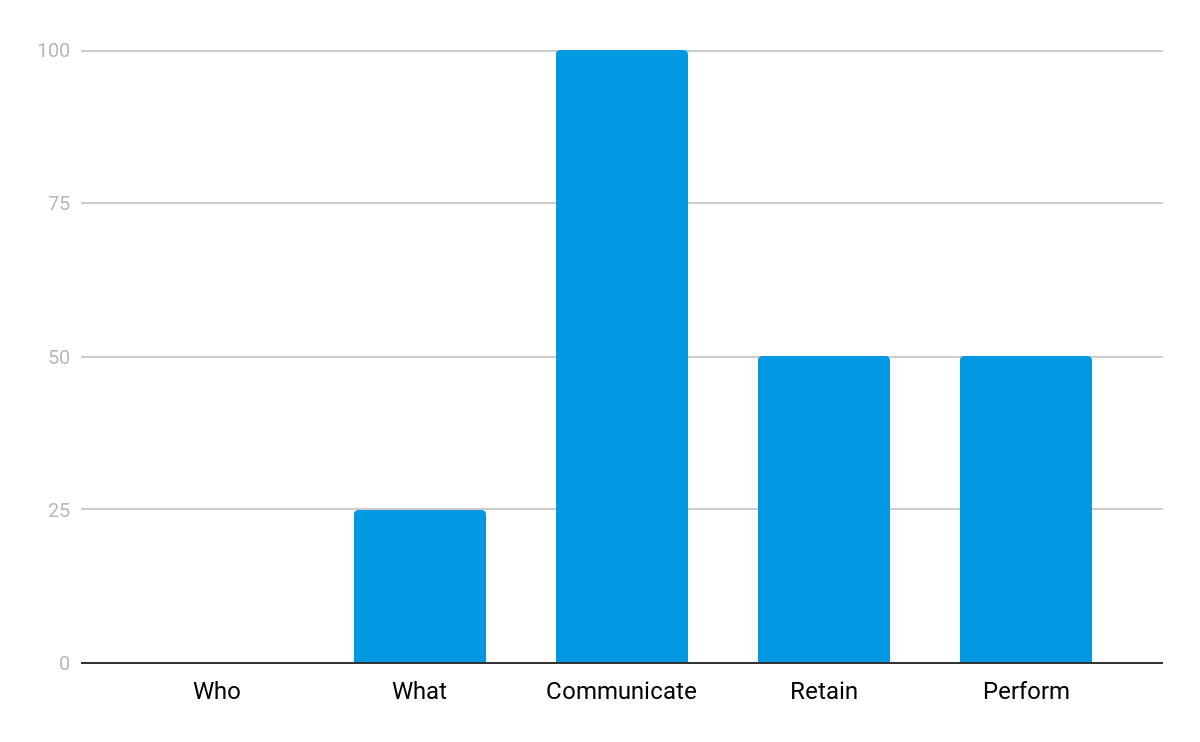
A product leader keeps everyone on the same page.
At this point, it becomes most important to keep everyone in sync. You’ve already established the “who” and the “what.”
Use multiple channels:
- Through the person who set the vision (founder/CEO). The founder is often a heart of the organization. Having the team hear the vision from this person can instill more confidence than all the “logical” presentations in the world.
- Through the Exec Team. Every executive has the advantage of being in the room with a broad team, but speaking the language of their specific discipline. They should translate the vision into one that makes the most sense to their team (and a product leader can make sure this is happening).
- Through the Product Team. Product teams often work with a variety of individuals in the organization. This makes them another touch point for continual reinforcement.
- Through communications & the office. Every email, standup, meeting, and event is a chance to reinforce the vision. The art on the walls and way the office is set up are other ways.
Check if information got through:
It’s not enough to just make sure you sent the information. It’s important to make sure it’s received (Fidji Simo has a great piece that touches on this).
- Walk around the office and ask people what they’re doing, and why. If you aren’t getting consistent answers when you ask people why, something isn’t being communicated.
- Connect with the people who have a pulse on the office. There are certain people in an office environment (Bellwethers) who tend to know how the team is feeling, and are willing to share and communicate upwards. Building strong relationships with these cultural centers can help make the team more effective.
Look backwards and forwards:
During this process, you’ll also spend time continuing to validate the vision. Scaling as quickly as possible is great, but don’t forget to check for tangible changes. At this point it will also become more important to build an effective team, and to help the team set good process up for success.
A product leader communicates (and listens) the right way.
Much like some product leaders go back to one validation technique, some product leaders go back to their default communication technique.
I like to read long form, structured emails (and essays). That doesn’t mean every team members will hear things that way. The time to revisit the communication style is when people seem confused, or when the entire team starts pushing back. This means that something has gotten out of sync.
Continued Excellence
After you’ve past these three phases, your company can level out some. You’re more focused on continuing to perform.
At this point, the “vision” becomes less important. You’re still making sure it’s right and that people know it, but those plans are set. Instead, you can spend time developing your team for maximum success, growth, and productivity.

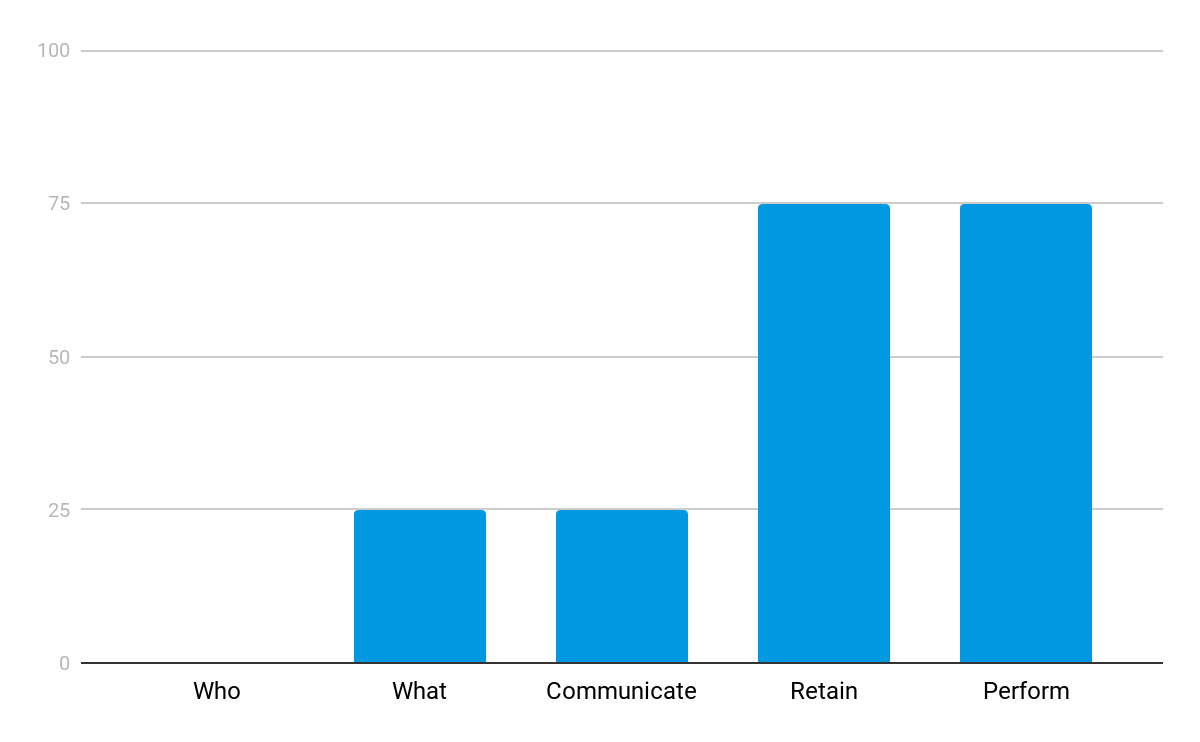
For a product leader, this falls into two categories: management and process. These are a few of the techniques I’ve found particularly useful in each.
Management
- Start from a strength. In an early stage organization it can be important to help an employee create a track record of success and establish creditability. One way to do this is to start from the area the employee is strongest in. Particularly in product jobs, there’s a wide set of tasks — one employee might be great at user research while another is great at quality control. Let the employee start from their area of strength and then grow.
- Ask for a lot to set a baseline. If you want employees to grow quickly, it can be important to get them outside of a comfort zone. One way to do so is by creating psychological safety and then giving projects that are too ambitious to be fully solved.
- Give feedback and provide choice. Stacey Scott gave me some of the best management coaching I’ve received. When giving feedback to an employee for growth, say “This is the behavior I’ve observed. This is how I think the behavior could limit you. Do you want to work on this?” Then the employee has bought in.
If you’re struggling to manage the team for growth, one fundamental question you can ask is “do I respect my team?” I’ve seen this most often with generational gaps — i.e. millennials wanting more information and older managers saying “why do they feel entitled to this?”
To fix this, I tend to ask “why does this bother me?” and find out if it’s a personal preference or something that’s negatively impacting the team. If it’s the latter, I talk to the person about it. If it’s the former, I try to figure out why it bothers me so much.
Process
- Set flexible frameworks. The job of a product leader isn’t necessarily to have all the answers. I love the Jon Bell McDonald’s theory. It isn’t your job to need to pick a project management tool, but you can say “how about Trello?” to get the process started. Giving people a starting place will help them to land on the best answers.
- Recruit external mentors. You don’t have to do everything yourself. Particularly when you’re managing a team that has a discipline expertise you don’t have, it can make sense to recruit outside experts to talk to your team and review their work.
If you’re struggling with this, ask yourself if you are managing for style or substance. Managing for substance is “did the right thing get done?” (what you should do). Managing for style is “did they do it the way I would?” which can be particularly noxious in product jobs.
Ongoing Development
While you should constantly be thinking about how to build your team and organization, it becomes best to revisit it at certain times. In particular:
- New team members and/or team size changes. When someone new joins, it’s important to re-evaluate if your management style and process is well suited to them.
- When you get feedback. Your job is to help make your team better. You should listen to the ways they say you can be more effective.
- Annual reviews. If nothing else, you should revisit how you’re managing for growth and performance at least once per year.
Balance
Balance as a product leader means answering the right questions at the right time.
While a product leader needs to answer these five questions:
- Who sets our vision?
- Is our vision right?
- Does everyone understand our vision?
- Are we building and retaining a great team through career growth?
- Do we have peak performance? Are executing as quickly as we can?
Answering them all at once just makes it feel like things are on fire.


